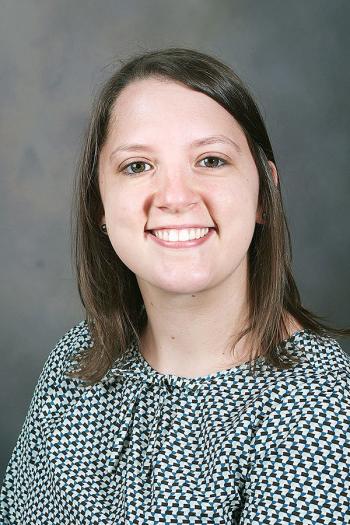
Becky B. Gautreaux, RD, LDN
--Submitted Photo
Dietician: Look at package label
Raise your hand if you feel overwhelmed or fooled by the advertisement on many food packages.
We have all been there even though we know that processed foods compromise our healthy eating habits. Yes, sometimes we do have to go to the center of the store for necessities. Frankly, we have to keep our eyes on the overall goal and not fall into the food companies’ trap.
Do not look at the cookies that promise to have as much Vitamin C as a cup of blueberries, which is actually equal to a quarter cup of orange sections. Now, it is ever more important to shop the perimeter of the store.
Let’s tour the grocery store because your health actually depends on it.
Walk straight to the cereal bar section. It is easy to get lost in the advertisements that are all over the packages. If you want to increase your fiber intake, try and not grab the bars or cookies. One medium to large apple (with skin) has the same 5g of fiber. You also would get more vitamins and minerals for fewer calories with choosing the apple. Apples are just as portable as that fiber cookie.
Walk over to a different aisle. Take on one shiny and captivating package at a time. Before you get caught up in the advertisement on the front of the package, flip it over or around and look for the Nutrition Facts label. Look at the serving size. All the information on this label is based on that one serving size. If you eat two servings, you will have to double all those amounts.
Do you see the Percent of Daily Values (% DV)? The Percentage of Daily Values is a general guide to help you compare nutrients in a serving of food to their contribution towards your total daily diet. It can help you know if a food is high or low in a nutrient. Five percent or less is considered low, while 20 percent or more is high. Ten-19 percent would be classified as good. The Percentage of Daily Values is based on a 2,000 calorie diet. You may need more or less in a day, but the Percentage of Daily Values is a generally a helpful guide.
Now if a serving contains 20 percent or more of a certain nutrient, the package can have “High in” that nutrient on the front of the package. Walk down the cereal aisle and notice how many are advertising they are high in fiber? Look at the other vitamins and minerals you see advertised on the front of the boxes and bags.
When looking at packages, please be mindful of the words, “fresh” and “healthy.” Food companies have to follow guidelines from the FDA to place these words on the package.
According to the FDA, “fresh” can only be used when used in a manner which suggests that a food is unprocessed. The term “fresh” means that “the food is in a raw state and has not been frozen or subjected to any form of thermal processing or preservation, except: The addition of approved waxes or coatings; The post-harvest use of approved pesticides; The application of a mild chlorine wash or mild acid wash on produce; or The treatment of raw foods with ionizing radiation not to exceed the maximum dose of 1 kilogray.” If this is what fresh means, do you wonder about the other items that are not labeled “fresh?”
For a more positive and honest experience, walk over to the produce section. Do you see the avocados announcing they are an excellent source of fiber? How about the cantaloupe? Are there signs above it saying that it contains 54 percent of daily values of Vitamin A and 49 percent of Vitamin C?
Are they all advertised as cholesterol-free or are most flagged as low in fat? No, rarely will you see this sectioned advertised with health claims. Actually, if this section would advertise, it would be covered in advertisements so much you couldn’t see what produce is behind the posters and neon signs. Do not fall for the exaggerated advertisements in the middle aisles. Instead, buy and eat more produce. They are just as portable as any grab and go snacks.
Stay tuned as we go into more detail with the complex subject. For more information on this or any nutrition-related topic, contact Becky B. Gautreaux, RD, LDN, the Area Nutrition Agent at the St. Mary Parish LSU AgCenter office, 500 Main St., Room 314, Franklin. She can be reached at 337-828-4100, extension 300 or bgautreaux@agcenter.lsu.edu.
Source: www.fda.gov and www.fruitsandveggiesmore matters.org.
--By BECKY GAUTREAUX, RD, LDN
LSU AgCenter Area Agent
- Log in to post comments
